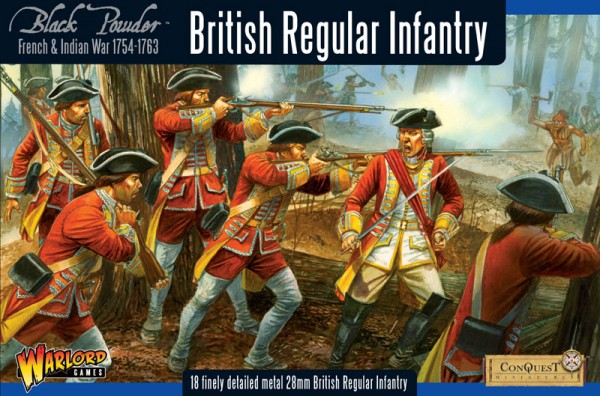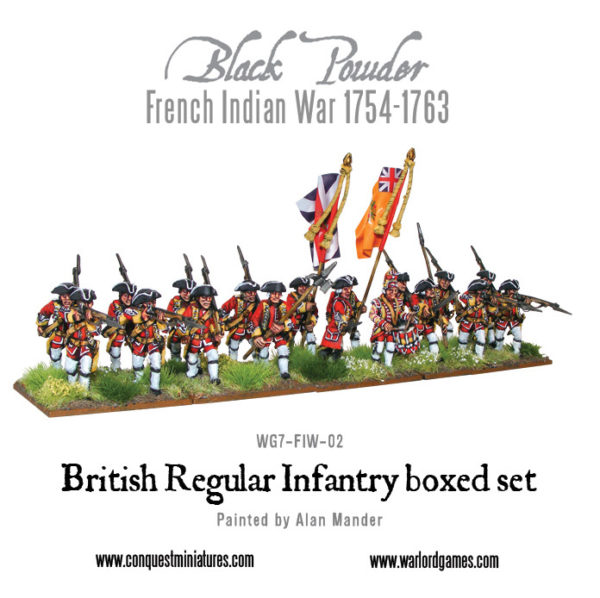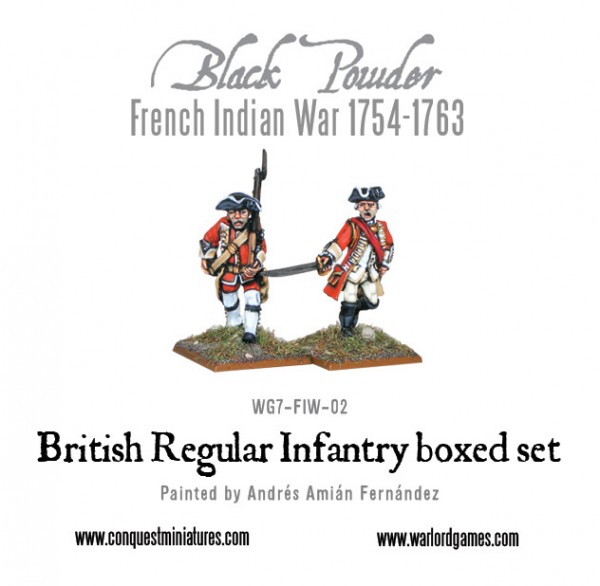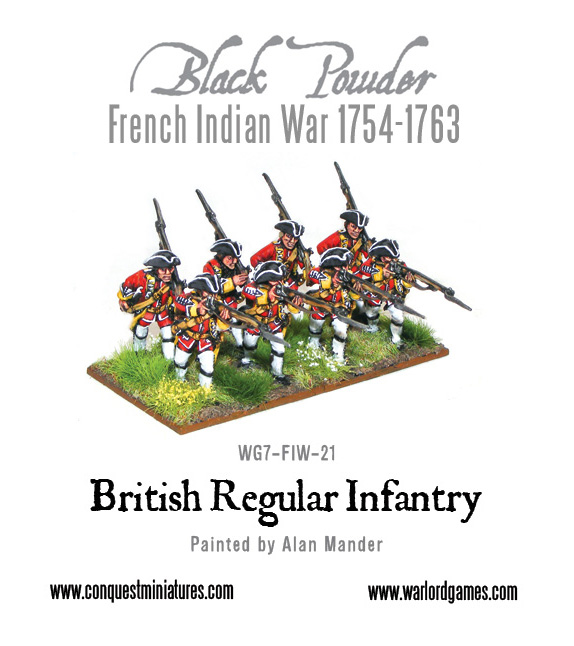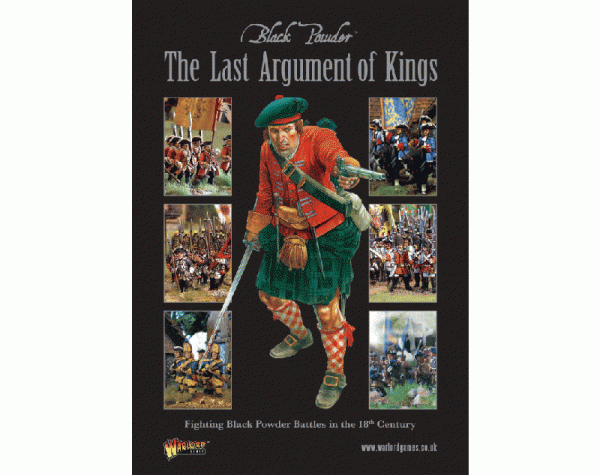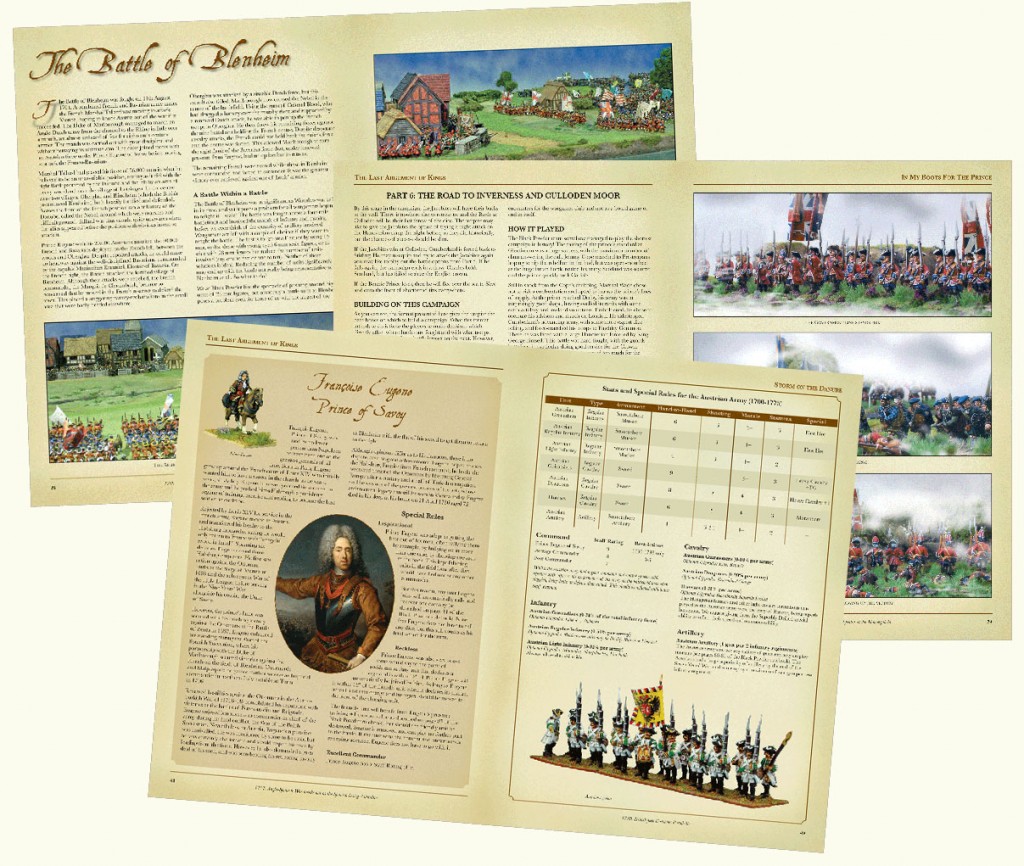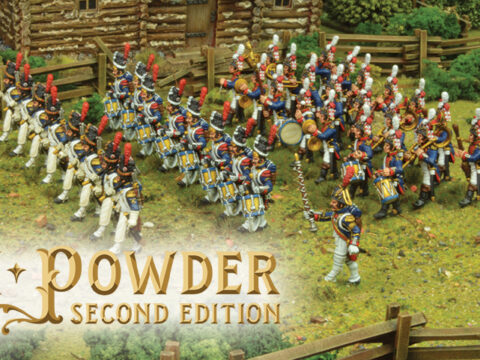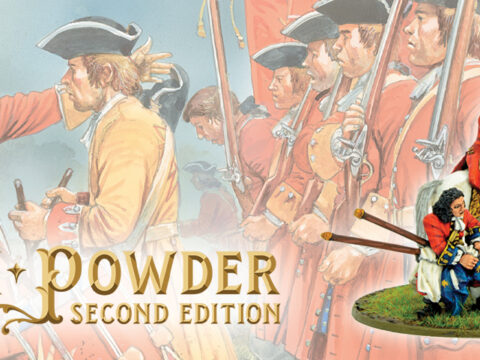The King’s famous Redcoats, taking the fight to the savage Indian and their oldest enemy – the French.
British soldiers have earned a reputation for being stubborn, well disciplined, and professional. From the fields of Europe, to the wilds of Africa, the islands of the Caribbean, and the mountains of the Far East, British soldiers have fought against tough odds and maintained their iron discipline. For the generals of European armies in the 18th century, war had developed into a gentleman’s sport, fighting engagements in the open fields of Europe. All of that changed when Britain and France went to war over the Ohio River country in North America…
British Regulars would soon arrive to bolster the colonial forces raised by the crown in the scramble to secure the forts of the Ohio River country. While the officers of the British army were wrangling with stubborn colonial governments, political problems and supply troubles, the soldiers of the British army found themselves in a place unlike anywhere they had ever fought.
The forests of North America are deep, dark, difficult terrain, stretching for miles with few breaks. The trees are tall and while they often feature occasional park-like open areas due to the slash and burn Indian hunting practices, the forests traverse hilly, mountainous terrain with no roads, lots of streams, and fields of boulders. Other areas are choked with dense underbrush and thorns. This kind of terrain was second nature to the Indian warrior, but would prove a formidable obstacle to the movement, supply, and tactical training of British Regulars.
British Regulars were trained to fight in formations and to rely on the steady presence of their officers and professional drill and fire discipline. These qualities were excellent up against French troops in an open field. In the woods of Pennsylvania, they would prove to be a harsh lesson…
Besides tactics, new equipment was issued including Indian leggings, hatchets, and cold weather gear. The uniforms were changed to suit the environment, with coat tails and hats being cut down and made to fit better and allow for easier movement through wooded terrain. By the end of the war, the British Regular had overcome the challenges of the fighting in North America. He was now an experienced woodland campaigner. The already unshakeable British soldier had become tougher and more adaptable in the field.

